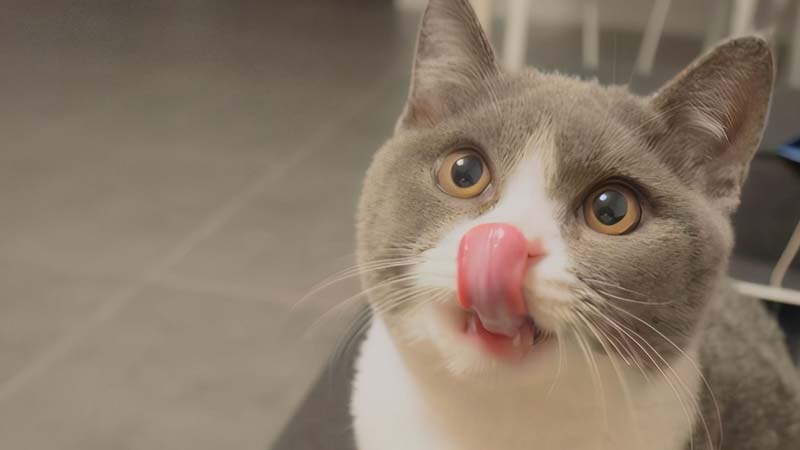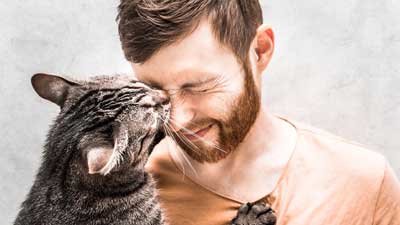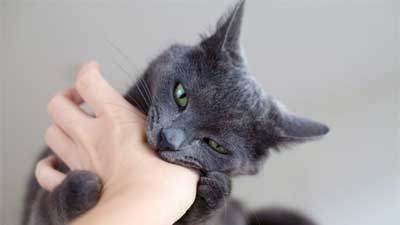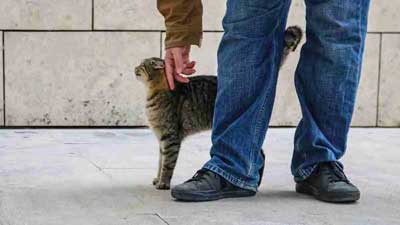Decoding Face Licks from Your Cat

There’s nothing quite like the affectionate nudge of a cat, but when that nudge turns into a sandpaper-like tongue bath, it can leave us wondering: what’s the meaning behind this behavior? Cat owners often find themselves on the receiving end of these licks, which can be cute yet slightly uncomfortable. Understanding the motivations behind this behavior can shed light on our furry friends' complex communication.
Cats are enigmatic creatures, and their behaviors often have layers of meaning. While the scientific community hasn’t entirely unraveled the secrets behind this behavior, there are several theories that may explain why your feline companion insists on giving you those slobbery face kisses.
Here are 8 reasons why cats lick your face:
1. Seeking Attention
When cats feel bored, lonely, or seeking interaction, they might resort to licking as a means of getting attention. Often, they've learned that this behavior garners a response, reinforcing it as a way to engage with you. However, excessive licking could also signal stress or separation anxiety, warranting a vet consultation.
2. Fond Family Memories
Cats, particularly when they've accepted you as part of their family, might express their affection through licking. This behavior mirrors how mother cats groom their kittens, creating a sense of security and bonding. Your cat may be reciprocating this behavior to convey their love and acceptance.
3. Marking Territory
Licking isn’t solely an act of affection; it’s a means for cats to mark items, including you, with their scent. By leaving their mark, cats establish a sense of ownership and familiarity, treating you as part of their social circle.
4. An Oral Fixation
Kittens separated from their mother before 8 weeks might develop an oral fixation. This behavior, rooted in their early development, can lead to excessive licking as a self-soothing mechanism. It’s crucial to address this behavior early to prevent other compulsive habits from forming.
5. Grooming Instinct
Despite how unpleasant a cat's saliva might seem, grooming is a sign of bonding. In the wild, cats groom each other to maintain social bonds and establish hierarchy. When your cat licks your face, they may view you as part of their group, demonstrating care through grooming.
6. Taste and Sensation
Sometimes, the taste or sensation might prompt your cat to lick you. Sweat, spills, or even the texture of your skin could be enticing for your feline friend. However, be cautious with lotions or medications on your skin to avoid any potential irritation or toxicity for your cat.
7. Underlying Medical Issues
Excessive licking could be a sign of discomfort or pain in your cat. While cats often groom themselves, an increase in licking behavior might indicate an underlying health issue. Consulting a vet can rule out any medical concerns.
8. Anxiety and Stress
Stressed or anxious cats might resort to licking as a soothing mechanism. Changes in behavior, such as excessive grooming, hiding, or altered appetite, can accompany this. Creating a stress-free environment with proper hiding spots, enrichment, and vet-recommended interventions can alleviate their anxiety.
Understanding the reasons behind your cat’s licking behavior is the first step in addressing it effectively. Cats communicate through various behaviors, and observing their cues can help decipher their needs.
Managing Excessive Licking: Tips and Strategies
1. Consultation with a Vet or Behaviorist
Identifying the underlying cause is paramount. Seek professional guidance from a veterinarian or certified feline behaviorist to determine any medical or behavioral issues triggering the excessive licking.
2. Addressing Medical Concerns
If a vet identifies any health issues, follow their recommendations for treatment. Physical discomfort or pain might be causing your cat to engage in excessive licking.
3. Redirecting Attention
When your cat attempts to lick you, gently redirect their attention to toys, treats, or engaging activities. This helps shift their focus away from licking your face.
4. Positive Reinforcement
Reward your cat when they refrain from licking. Offering treats, praise, or playtime as a positive reinforcement encourages desired behaviors.
5. Establishing Boundaries
If redirection doesn't work, create boundaries by moving away or gently placing them down when they try to climb on your face.
6. Protecting Your Skin
Avoid allowing your cat to lick areas with open wounds or abrasions to prevent potential infections, especially for individuals with weakened immune systems.
7. Consistency and Patience
Consistency in redirecting their behavior and patience in applying these strategies are crucial. Modifying behavior takes time and persistence.
8. Mental and Physical Stimulation
Engage your cat in interactive play sessions or provide puzzle toys to alleviate boredom or stress, reducing the likelihood of excessive licking.
9. Creating a Stress-Free Environment
Offer hiding spots or safe areas where your cat can retreat when feeling overwhelmed or anxious, promoting a stress-free atmosphere.
10. Consider Pheromone Products
Using pheromone diffusers or sprays recommended by your vet can create a calming environment and reduce stress-related licking.
Conclusion
Remember, while these theories provide insights, every cat is unique. Paying attention to your cat's specific behaviors and seeking professional advice when necessary ensures a happy, healthy relationship between you and your feline companion.
You May Also Like
 Cat Behavior7 Reasons Why Your Cat Keeps Licking Your Face
Cat Behavior7 Reasons Why Your Cat Keeps Licking Your Face Cat BehaviorWhy Does My Cat Lick My Feet? (Territorial Marking?)
Cat BehaviorWhy Does My Cat Lick My Feet? (Territorial Marking?) Cat BehaviorThe 6 Meanings of a Cat's "Nose Kiss", Do You Know?
Cat BehaviorThe 6 Meanings of a Cat's "Nose Kiss", Do You Know? Cat BehaviorThe 7 Reasons Cats Bite, and How to Stop The Behavior
Cat BehaviorThe 7 Reasons Cats Bite, and How to Stop The Behavior Cat BehaviorPossible Reasons for Cat Slapping You With Her Tail
Cat BehaviorPossible Reasons for Cat Slapping You With Her Tail Cat BehaviorCan Cats Sense Their Owner's Emotions?
Cat BehaviorCan Cats Sense Their Owner's Emotions?